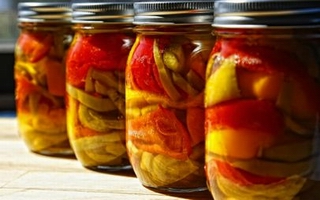 ing is a popular activity — but one that must be done safely in order to prevent the growth of dangerous bacteria, the Centers for Disease Control and Prevention is reminding the public.
ing is a popular activity — but one that must be done safely in order to prevent the growth of dangerous bacteria, the Centers for Disease Control and Prevention is reminding the public.“Home canning is a great way to preserve your garden goodies. But beware: if it’s done the wrong way, the vegetables you worked so hard for could become contaminated by a germ that causes botulism, a serious illness that can affect your nerves, paralyze you, and even cause death,” warned the agency in a post on its website Monday.
Home-canned foods are the most common source of botulism in the United States, according to CDC. Foods prepared at home accounted for 48 of the 116 foodborne botulism outbreaks reported to the agency between 1996 and 2008. Of these 48 outbreaks, 18 (38 percent) were linked to home-canned vegetables.
In order to create an environment that doesn’t allow for the growth of Clostridium botulinum bacteria — which produce the toxins that cause botulism — CDC offers the following advice:
- Make sure the canning technique you are using is up-to-date and aligns with new guidance rather than with an old, possibly outdated recipe. Canning guidelines can be found at the following sites:
• The National Center for Home Food PreservationExternal Web Site Icon
• USDA Complete Guide to Home CanningExternal Web Site Icon
• The state and county extension serviceExternal Web Site Icon of your state university
- Always use a pressure canner or cooker. Pressure canning is the only recommended method for canning vegetables, meat, poultry, and seafood. Boiling water canners will not help prevent botulism poisoning.
- Be sure the gauge of the pressure canner or cooker is accurate.
CDC also advises consumers to keep an eye out for signs their home-canned food could be contaminated. These include:
- The container is leaking, bulging, or swollen
- The container looks damaged, cracked, or abnormal
- The container spurts liquid or foam when opened
- The food is discolored, moldy, or smells bad
If you suspect that a can may be contaminated, do not open it — as you may spread the bacteria — and do not taste it, says CDC. If any of the potentially contaminated food is spilled, clean the area with a diluted bleach solution of 1/4 cup of bleach to 2 cups of water.





